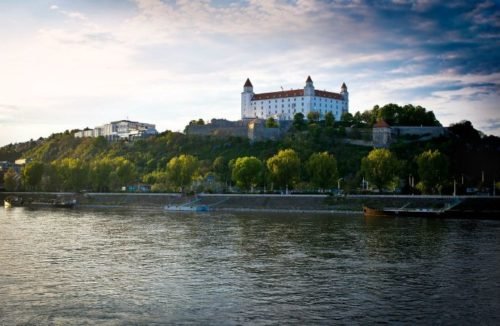The Italian compressor manufacturer told the 9th International Conference on Compressors and Coolants that for many OEMs, it is not a question of using CO2 but of how best to use it.

“CO
2 transcritical is a standard for commercial refrigeration” in Europe, Livio Calabrese, from the sales and development side of Frascold’s business, told R744.com at the 9
th International Conference on Compressors and Coolants (taking place near Bratislava, Slovakia from 6-8 September 2017). For the Italian compressor manufacturer, it is now a question of how to provide customers with the right information to select compressors for their CO
2 transcritical systems. “The problem with smaller OEMs is they don’t know what they need,” Calabrese explains. “Before, with other compressors, we asked them the capacity and application in a software tool then told them which compressor they needed. With CO
2, it’s more complicated.” Frascold uses selection software for CO
2 that does not just show compressor information but also allows the client to model the compressors in a CO
2 refrigeration system. It shows how many compressors are needed for a system and allows for the introduction of inverters, which can help reduce the number of compressors required. “This allows customers to select what they need,” Calabrese says. “This depends on whether they want a very efficient complex CO
2 system or a less complex and cheaper system.” The need for selection software that integrates system design has led the over 80-year-old company to hire additional people so they can model much better their customer needs. Frascold has one of the largest selections of CO
2 compressors in the market. “Our subcritical and transcritical series are suitable for many applications including heat pumps, cascade and booster systems,” he says.
Reaching new heights in Italy
One of Frascold’s customers recently completed an impressive CO
2 installation in a supermarket in Monticello, Brianza in northern Italy.
“This transcritical booster system with parallel compression includes air conditioning and heat recovery. Refrigeration capacity is 90 kW at medium temperature (-8°C) and 18 kW at low temperature (-35°C),” he says.
This system is constructed with 10 compressors in total, divided between three pressure stages for maximum efficiency. The supermarket display cases are cooled to 0°C by three medium-temperature compressors, one of which boasts VFD (a variable frequency drive).
The frozen food display cabinets are cooled by three low-temperature A1.5-3SK3 compressors (high standstill pressure of 80bar), operating at -35°C. One of these is VFD-controlled to provide capacity control flexibility.
Three parallel compressors that provide a total of 40 kW of cooling capacity handle air conditioning.
Since the system was installed on 1 August, feedback on the unit is extremely good. “Technicians from both design company and installer reported the compressors run smoothly and quietly. This is especially important as this is a retail environment and noise must be minimal,” Calabrese says.
Environmental impact has been one of the driving forces behind changes in the refrigeration industry for many years now. The high global warming potential of traditional refrigerants such as CFCs and HCFCs has fueled strong demand for sustainable alternatives.
As these high-GWP refrigerants are phased out, manufacturers have begun to move toward natural refrigerants such as hydrocarbons, CO
2, and ammonia. Their lower GWP is attractive, but their physical properties have presented unique technological challenges for manufacturers.
The increasing demand for natural refrigerants is especially evident in the commercial refrigeration and air conditioning sectors. Recent technological advances have allowed carbon dioxide to become a viable alternative to HFCs.
“Frascold is at the forefront of the move toward natural refrigerants, and we have collaborated with universities and research institutes all over the world. We have several compressor lines available for CO
2, ammonia and hydrocarbons. Numerous CO
2systems throughout Germany, Russia, Italy and South Africa are running our compressors,” Calabrese said.
“For R290 (propane), our full line of semi-hermetic reciprocating compressors is available in ATEX configuration. ATEX versions of our CX series compact screw compressors are also available and suitable for a wide array of applications.”
“For ammonia, we offer our ATS series of open screw compressors. This range consists of 16 models ranging from 120 to 360 m
3/h,” he said.
Source:
www.r744.com
